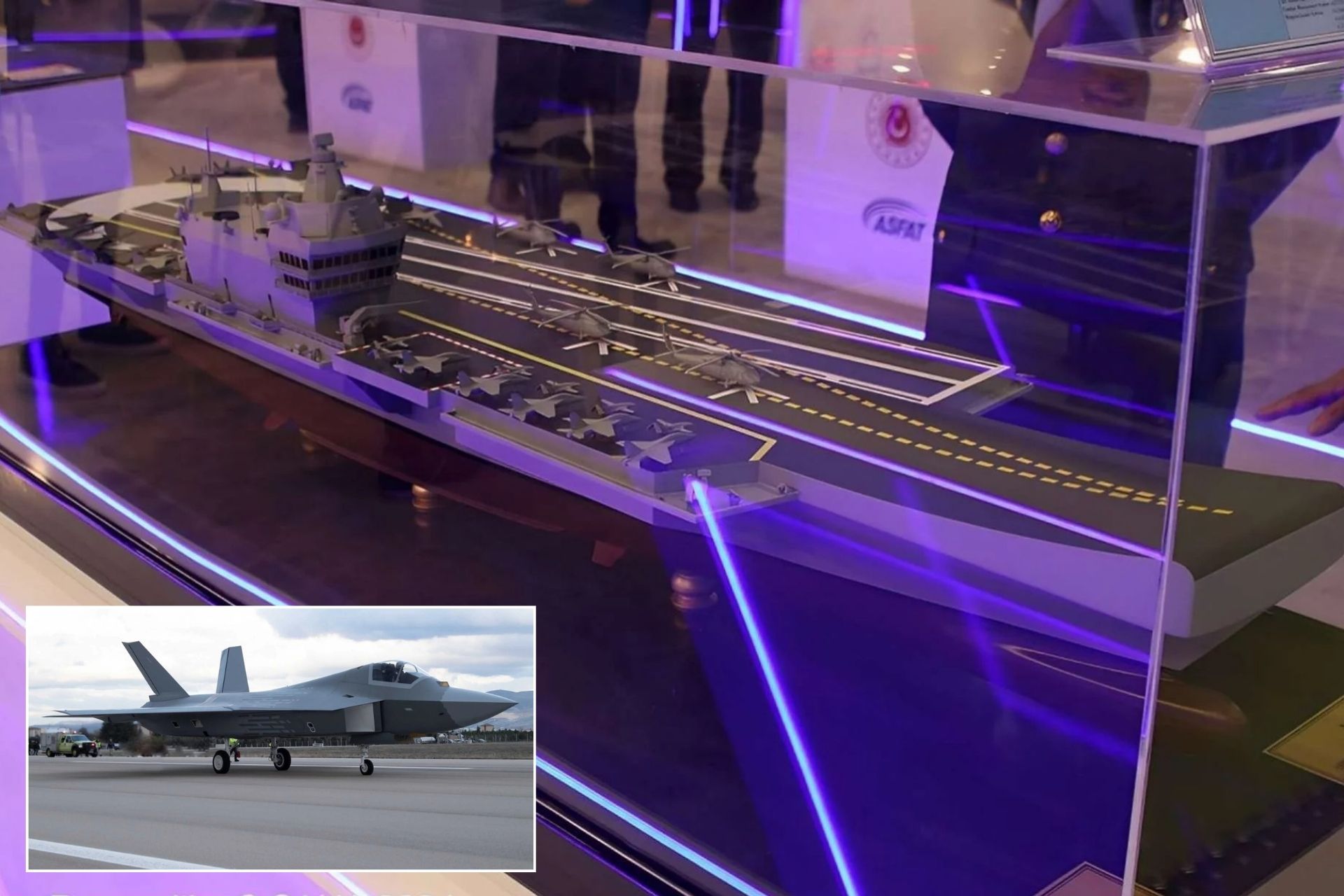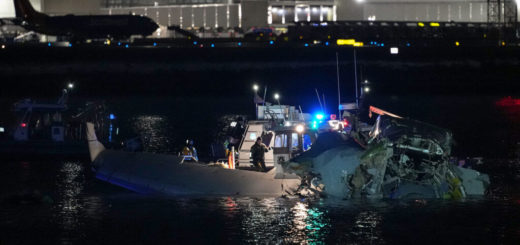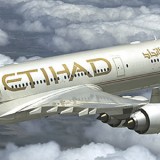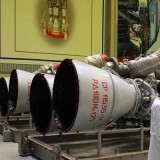Türkiye Considers a Carrier-Based Version of KAAN Fighter for Its Future MUGEM Aircraft Carrier

{loadposition bannertop}
{loadposition sidebarpub}
On February 19, 2025, Ulusavunma reported that Türkiye is exploring the possibility of developing a carrier-based version of its fifth-generation stealth fighter, KAAN, designed for naval operations on its future aircraft carrier, MUGEM. This initiative is part of a broader strategy to establish an independent and modern carrier aviation capability. Currently under discussion between the Turkish Navy’s design bureau and Turkish Aerospace Industries (TAI), the project would require significant structural and technological modifications to adapt the KAAN to the requirements of carrier-based operations.
Follow Army Recognition on Google News at this link
First model of the Turkish-built MUGEM aircraft carrier in Saha 2024 (Picture source: ArmyRecognition)
Originally designed for land-based operations, the KAAN would need modifications to enable takeoff and landing on an aircraft carrier. Necessary adjustments include reinforced landing gear, an arrestor hook, and foldable wings for optimized storage onboard. The choice of launch and recovery system will also impact its development. The MUGEM is designed for STOBAR (Short Take-Off But Arrested Recovery) operations, meaning the KAAN would need to take off using a ski-jump and land using arrestor cables. However, a future transition to a CATOBAR (Catapult Assisted Take-Off But Arrested Recovery) configuration is being considered, which could require additional modifications, such as a reinforced landing gear structure to withstand catapult launch forces.
Construction of the MUGEM aircraft carrier officially began on January 2, 2025. This 285-meter-long, 60,000-ton vessel represents a significant step in Türkiye’s naval development. It features an angled flight deck measuring 72 meters in width and a draft of 10.1 meters. The ship is designed to accommodate up to 50 aircraft, including 30 stored in the hangar and 20 positioned on the flight deck. Upon entering service, it will not be equipped with a catapult system, but a modular launch system is planned for future integration. The ship’s propulsion system is based on COGAG (Combined Gas And Gas) technology, allowing a maximum speed of 25 knots and an operational range of 10,000 nautical miles, enabling both regional and international deployments.
The KAAN fighter, developed by TAI under its initial designation Milli Muharip Uçak (MMU) or TF-X, conducted its maiden flight in February 2024, reaching an altitude of 8,000 feet and a speed of 230 knots. A second flight in May 2024 extended its altitude to 10,000 feet. The development program aims to produce three Block prototypes by 2026 and a Block I prototype by 2029.
From a technical standpoint, the KAAN is designed as a fifth-generation fighter with a reduced radar signature and high maneuverability. It measures approximately 21 meters in length, with a 14-meter wingspan and a 6-meter height. Its maximum takeoff weight is estimated at 27,000 kg. It is currently powered by two General Electric F110 engines, though Türkiye is developing an indigenous engine in collaboration with TRMotor, intended for integration into future production models.
The aircraft is equipped with an AESA (Active Electronically Scanned Array) radar, developed domestically, providing advanced detection and tracking capabilities. It also features an IRST (Infrared Search and Track) system for passive target acquisition and an advanced electronic warfare suite capable of countering enemy targeting systems.
The KAAN’s armament includes a variety of air-to-air and air-to-ground missiles, with internal weapons bays to maintain stealth characteristics. Expected weapons include the Gökdoğan (Bozdogan) and Gökhan missiles, designed for medium- and long-range engagements. The aircraft will also be capable of carrying precision-guided bombs and cruise missiles. Future developments could integrate hypersonic weapons and artificial intelligence-based systems to enhance combat autonomy.
Its cockpit features an advanced glass cockpit interface with touchscreen displays and an enhanced head-up display (HUD). It incorporates artificial intelligence to assist with data processing and decision-making, reducing pilot workload. In terms of connectivity, the KAAN is designed for networked operations, enabling coordination with other aircraft, including combat drones and airborne command platforms.
Adapting the KAAN for carrier operations presents a significant technological challenge but aligns with medium-term plans to enhance Türkiye’s airpower projection. If realized, this project would provide the Turkish Navy with a fifth-generation carrier-based fighter, strengthening its operational capabilities. The successful integration of the KAAN into the MUGEM program would mark a key milestone in Türkiye’s military aviation development, positioning it among nations with advanced carrier aviation capabilities.

{loadposition bannertop}
{loadposition sidebarpub}
On February 19, 2025, Ulusavunma reported that Türkiye is exploring the possibility of developing a carrier-based version of its fifth-generation stealth fighter, KAAN, designed for naval operations on its future aircraft carrier, MUGEM. This initiative is part of a broader strategy to establish an independent and modern carrier aviation capability. Currently under discussion between the Turkish Navy’s design bureau and Turkish Aerospace Industries (TAI), the project would require significant structural and technological modifications to adapt the KAAN to the requirements of carrier-based operations.
First model of the Turkish-built MUGEM aircraft carrier in Saha 2024 (Picture source: ArmyRecognition)
Originally designed for land-based operations, the KAAN would need modifications to enable takeoff and landing on an aircraft carrier. Necessary adjustments include reinforced landing gear, an arrestor hook, and foldable wings for optimized storage onboard. The choice of launch and recovery system will also impact its development. The MUGEM is designed for STOBAR (Short Take-Off But Arrested Recovery) operations, meaning the KAAN would need to take off using a ski-jump and land using arrestor cables. However, a future transition to a CATOBAR (Catapult Assisted Take-Off But Arrested Recovery) configuration is being considered, which could require additional modifications, such as a reinforced landing gear structure to withstand catapult launch forces.
Construction of the MUGEM aircraft carrier officially began on January 2, 2025. This 285-meter-long, 60,000-ton vessel represents a significant step in Türkiye’s naval development. It features an angled flight deck measuring 72 meters in width and a draft of 10.1 meters. The ship is designed to accommodate up to 50 aircraft, including 30 stored in the hangar and 20 positioned on the flight deck. Upon entering service, it will not be equipped with a catapult system, but a modular launch system is planned for future integration. The ship’s propulsion system is based on COGAG (Combined Gas And Gas) technology, allowing a maximum speed of 25 knots and an operational range of 10,000 nautical miles, enabling both regional and international deployments.
The KAAN fighter, developed by TAI under its initial designation Milli Muharip Uçak (MMU) or TF-X, conducted its maiden flight in February 2024, reaching an altitude of 8,000 feet and a speed of 230 knots. A second flight in May 2024 extended its altitude to 10,000 feet. The development program aims to produce three Block prototypes by 2026 and a Block I prototype by 2029.
From a technical standpoint, the KAAN is designed as a fifth-generation fighter with a reduced radar signature and high maneuverability. It measures approximately 21 meters in length, with a 14-meter wingspan and a 6-meter height. Its maximum takeoff weight is estimated at 27,000 kg. It is currently powered by two General Electric F110 engines, though Türkiye is developing an indigenous engine in collaboration with TRMotor, intended for integration into future production models.
The aircraft is equipped with an AESA (Active Electronically Scanned Array) radar, developed domestically, providing advanced detection and tracking capabilities. It also features an IRST (Infrared Search and Track) system for passive target acquisition and an advanced electronic warfare suite capable of countering enemy targeting systems.
The KAAN’s armament includes a variety of air-to-air and air-to-ground missiles, with internal weapons bays to maintain stealth characteristics. Expected weapons include the Gökdoğan (Bozdogan) and Gökhan missiles, designed for medium- and long-range engagements. The aircraft will also be capable of carrying precision-guided bombs and cruise missiles. Future developments could integrate hypersonic weapons and artificial intelligence-based systems to enhance combat autonomy.
Its cockpit features an advanced glass cockpit interface with touchscreen displays and an enhanced head-up display (HUD). It incorporates artificial intelligence to assist with data processing and decision-making, reducing pilot workload. In terms of connectivity, the KAAN is designed for networked operations, enabling coordination with other aircraft, including combat drones and airborne command platforms.
Adapting the KAAN for carrier operations presents a significant technological challenge but aligns with medium-term plans to enhance Türkiye’s airpower projection. If realized, this project would provide the Turkish Navy with a fifth-generation carrier-based fighter, strengthening its operational capabilities. The successful integration of the KAAN into the MUGEM program would mark a key milestone in Türkiye’s military aviation development, positioning it among nations with advanced carrier aviation capabilities.





